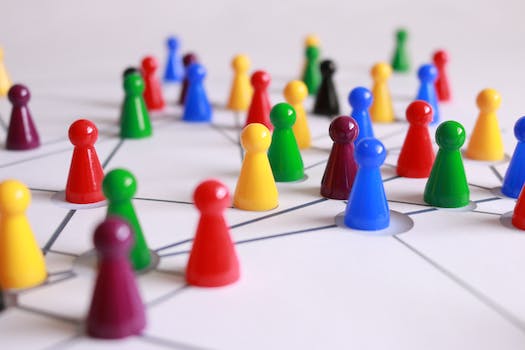-
Table of Contents
- The Grid: A Network of Possibilities
- The Evolution of the Grid
- Smart Grids: The Future of Energy Distribution
- Case Study: The European Union’s Smart Grid Initiative
- The Grid as a Network of Data
- Data Security and Privacy Concerns
- Statistics: The Growing Threat of Cyberattacks on Grids
- Conclusion
- Q&A
- Q: What are the key benefits of smart grids?
- Q: How can we protect the grid from cyberattacks?
- Q: What role does data play in optimizing grid operations?
- Q: How is the grid evolving to support renewable energy sources?
- Q: What are the challenges facing the grid in the future?

In today’s digital age, the grid is more than just a network of interconnected lines and nodes. It is a complex system that powers our modern world, enabling the flow of electricity, data, and information. From smart grids to energy grids, the grid plays a crucial role in shaping our daily lives. In this article, we will explore the various aspects of the grid and how it impacts our society.
The Evolution of the Grid
Over the years, the grid has evolved from a simple network of power lines to a sophisticated system that integrates renewable energy sources, storage technologies, and advanced communication systems. The traditional grid, known as the centralized grid, relies on large power plants to generate electricity and transmit it over long distances to consumers. However, this model is becoming outdated as we transition to a more decentralized and sustainable grid.
Smart Grids: The Future of Energy Distribution
Smart grids are revolutionizing the way we generate, distribute, and consume electricity. By incorporating digital technologies, sensors, and automation, smart grids enable real-time monitoring and control of the grid, improving efficiency, reliability, and resilience. These grids also support the integration of renewable energy sources, such as solar and wind power, by optimizing their output and reducing grid congestion.
- Real-time monitoring and control
- Integration of renewable energy sources
- Improved efficiency and reliability
Case Study: The European Union’s Smart Grid Initiative
The European Union has been at the forefront of smart grid development, with initiatives such as the European Smart Grids Task Force and the European Technology Platform for Smart Grids. These efforts aim to accelerate the deployment of smart grids across Europe, promoting energy efficiency, sustainability, and innovation.
The Grid as a Network of Data
In addition to electricity, the grid also serves as a network for transmitting data and information. With the rise of the Internet of Things (IoT) and connected devices, the grid is becoming increasingly interconnected, enabling real-time communication between devices, sensors, and systems. This data exchange is essential for optimizing grid operations, predicting demand, and enhancing grid security.
Data Security and Privacy Concerns
As the grid becomes more data-driven, concerns about data security and privacy have become more prominent. Cyberattacks on critical infrastructure, such as power grids, pose a significant threat to our society. It is essential to implement robust cybersecurity measures to protect the grid from malicious actors and ensure the integrity of our energy systems.
- Cybersecurity measures for grid protection
- Data encryption and secure communication protocols
- Regulatory frameworks for data privacy
Statistics: The Growing Threat of Cyberattacks on Grids
According to a report by the U.S. Department of Energy, cyberattacks on energy grids have increased by 60% in the past year, highlighting the urgent need for enhanced cybersecurity measures. These attacks can disrupt power supply, cause financial losses, and jeopardize national security.
Conclusion
In conclusion, the grid is not just a network of power lines; it is a network of possibilities. From smart grids to data networks, the grid plays a vital role in shaping our future. By embracing innovation, sustainability, and collaboration, we can build a resilient grid that meets the needs of our society. Let’s harness the power of the grid to create a brighter and more sustainable future for all.
Q&A
Q: What are the key benefits of smart grids?
A: Smart grids offer real-time monitoring, integration of renewable energy sources, and improved efficiency and reliability.
Q: How can we protect the grid from cyberattacks?
A: Implementing robust cybersecurity measures, data encryption, and secure communication protocols are essential for grid protection.
Q: What role does data play in optimizing grid operations?
A: Data enables predictive analytics, demand forecasting, and enhanced grid security.
Q: How is the grid evolving to support renewable energy sources?
A: Smart grids are integrating solar, wind, and other renewables to optimize their output and reduce grid congestion.
Q: What are the challenges facing the grid in the future?
A: Data security, grid resilience, and regulatory frameworks are key challenges that need to be addressed for a sustainable grid future.






